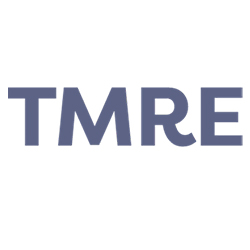
What We Learned at TMRE: Five Key Elements to Storytelling
Filed Under: Best Practices, Market Research, Reporting, Tools & Techniques
Patricia (Patti) Fernandez
Vice President, Communities & Panels
The Marketing Research Event was buzzing with excitement and anticipation. What tales would we hear, what knowledge would we uncover, what trends would take center stage? And, in the end, on what new paths would we, as researchers, venture?
Insight development via storytelling and storytelling through data visualization were very much in the air. Many a session encouraged us, like Dorothy, to follow the yellow brick road toward our own Emerald City where insights break the confines of numbers and quotes and live within visually compelling stories.
But, in today’s data-driven world, how can we tell a story visually while seamlessly satisfying the needs of the data literalists? And, how can we shake the compulsion to show everything we’ve uncovered because (in our minds) every nugget matters?
The key is not only to tell a story, but also to approach the insight development process in the same way as story-creation. Here are five key elements to a solid storytelling approach:
Relevance is Key
- There is usually a rhyme and reason for everything that is included in a story (foreshadowing, plot-building, etc.).
- In that same way, results and insights should serve as key puzzle pieces that help build and complete a bigger picture.
- Relevance, though, takes time. We must first go treasure-hunting through all of our findings in order to determine which ones truly are worthy of supporting the key insights that need to be communicated.
Order Matters
- Stories follow a natural, rational order that keeps us alert and engaged with the plot.
- Our insights and findings, then, should follow the same path. They should help take the audience on a journey that makes sense and keeps them on the edge of their seats.
Create Conflict and Resolution
- Without conflict there is no resolution – without resolution there is no end to a story.
- Always aim to keep the plot of your story anchored. Your role as a researcher is to tell a story that ultimately helps resolve some sort of conflict.
Define Your Characters and Their Roles
- Characters have set roles in the story – they exist for a reason.
- In order to approach research in an organized and rational manner, we must first define who the characters are and what role they play.
- We may be swayed to think that the brand or product is the hero, but it is the consumer who should wear this badge. Brands are simply the tools that help the hero resolve conflict.
Bring Your Story to Life
- A good story will keep us turning the pages if it’s told in an engaging manner. Overuse of descriptive or circular plots can deter engagement and leave us tossing the story aside without finishing.
- And, just like a poorly written story, research results that are loaded with data that makes the audience have to work too hard to decipher the true message can fall flat.
- Using visual depictions of information to surprise and make data easily digestible will not only make your research more engaging, but also make it easier to present the story in personal and animated manner.
In the end, it’s not simply how you present your insights with iconic figures, captivating prose, and visually stimulating graphics – it’s how you approach the insight-finding process. So, take a leap of faith and follow the rabbit down the hole through a journey of discovery.
explore featured
Case studies

